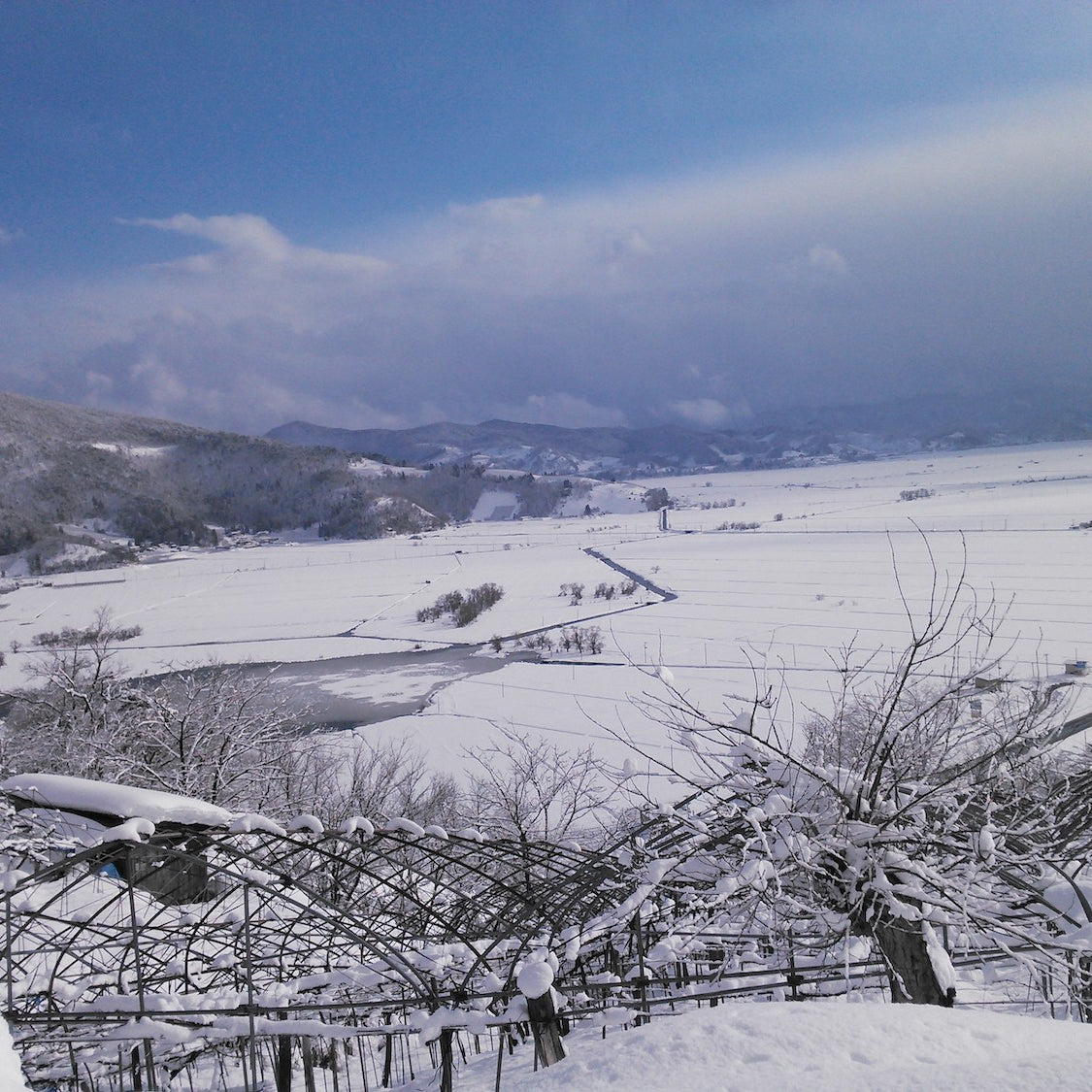Sakai Winery
Nanyo, Yamagata
People
Sakai Winery was established in 1892 and is the oldest winery in the Tohoku region.
Originally it was a hot-spring ryokan (Japanese style hotel) in the Akayu Hot Springs area in Nanyo, run by Yaso Sakai, the head of the Sakai family. He was an ambitious man who was involved in a variety of businesses, including wine, soy sauce and miso production and a shipping agent.
He was given a bottle of red Bordeaux wine to drink by a professor at the Imperial University, which was too astringent for his palate, and he began making wine on his own, learning as he went along and cultivating vineyards on the slopes of the Toriagezaka mountain in Akayu.
He then served as mayor of the town of Akayu from 1908 to 1924, when the town freed up one sufficient mountain owned by the town to be used as vineyards. In the early Showa period, the cultivation of Delaware, which had come from the USA, began in earnest. This brought the Akayu area to booming prosperity.
The current fifth generation, Ippei Sakai, entered the family business in 2004, after graduating from postgraduate university. ‘Since I was a child, I somehow knew that I would go down that path. I learnt about brewing at university and cultivation on the job.’
In addition to three family members, there are three employees. Two people, including Ippei, work in the vineyards, while everyone works together on other tasks such as bottling and sales
Vineyard
Akayu is located in the mountains of the Yonezawa basin. The flat land is swampy and rice has long been cultivated in the area.
In the Meiji era (1868-1912), the people of Akayu, including Yaso, who started making wine, began cultivating grapes. However, it was difficult to cultivate grapes on the flat part of the land, which was so marshy that they had to use boats to move from one rice field to another, and half their bodies were immersed in the water.
The people of Akayu therefore found a way to take advantage of the mountain slopes' good drainage and cultivated the mountains one after another. The mountain fields are well ventilated and the slopes ensure sunshine. This field scene still exists today, with rice cultivation on the plains and grape cultivation on the slopes, which is a characteristic of Akayu.
By overcoming the unfavourable soil conditions, Yamagata, including Akayu, has grown into a major grape-growing region in Japan. At Sakai Winery, they are attached to Akayu, which was built up through the hard work of their predecessors, and they cultivate grapes while carrying on the tradition.

Their own vineyards total 7.5 ha. The soil is characterised by a very high proportion of tuff and gravels with clay mixtures and a variety of minerals. The soil is well drained and underground water flows under the soil. Gives the wines minerality and concentration.
In winter, up to 2 m of snow can accumulate. The vines are covered in snow, but the temperature does not fall below 0°C, which prevents frost damage. Melting snow provides groundwater that cools the mountains in summer. The cold water makes the vines less susceptible to heat damage. The vines grow well even in hot summers such as those of recent years.
The low soil temperature cools the grape berries during the hot summer months, creating a temperature difference between day and night. This is important during the veraison period, when the grape berries are coloured, and prevents the release of excess nutrients, allowing the grapes to be harvested at a high level of ripeness with good nutrition in the berries. This cold ground is one of the factors behind Sakai Winery's high quality wines.
Nanyo is famous for its location on the edge of the Yonezawa Basin, which creates updrafts and year-round winds, and paragliding is so popular that world championships are held here. The winds from the mountains blow through the vineyards, preventing disease-causing humidity from building up. This terroir makes viticulture possible.
Winemaking
Ippei initially followed the textbook method, selecting yeasts, adding lactic acid bacteria and introducing 225-litre barriques for winemaking, rather than the 500-litre barrels and enamel tanks used in his father's time.
However, Ippei began to ask himself whether there was any need for him to make wine here in such a normal way, what was ‘normal’ in the first place, and what his beliefs were. As he thought about what kind of wine he wanted to make in Akayu, he made the decision to go back to the winemaking of 100 years ago.
Ippei's idea of ‘wine unique to Akayu’ is wine made from what is available in the region.

A hundred years ago, although there were grapes, the only fermentation vessels were vats used for miso and soy sauce. Paddle sticks were made from branches from the forest or whatever else was around. There was no such thing as cultured yeast, so fermentation was carried out with micro-organisms living on the land. This is the reason why Ippei insists on fermentation with wild yeast.
The winery which has been making wine for over 100 years has never used a filter for filtration since its establishment. Therefore, they wait for the wine lees in the tanks to settle naturally and then scoop out only the upper part of the wine.
After repeating this process, the last remaining part is matured with the lees (sur lie) in sake bottles (1.8 litres) and the supernatant is bottled. This is a vinification process that is only possible in Japan, where sake bottles are available. The wines are unfined and unfiltered, with very small amounts of sulphites added, and some have no additives.
Finally, Ippei, his family and colleagues send a message to people across the sea: ‘We would be pleased if people in Europe could also enjoy our wines’.
Find out their wines
COHIME-SANS 2022
€30,00
Cohime-sans 2024
€32,00






